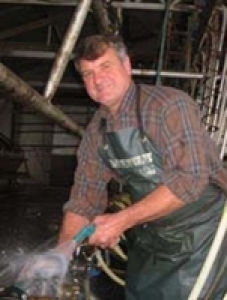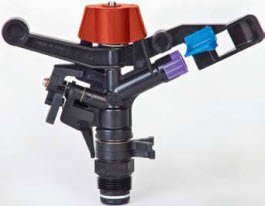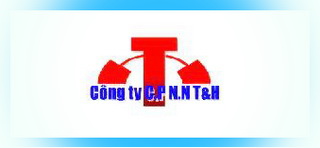The solution to store, save and supply water
Saving water in dairies (part 5)

Part 5 - Other Areas
In this miscellaneous section we look at a range of ideas to reduce water use both in and out of the dairy. Use the links below to see if any of these ideas can be applied on your farm.
Washing Cows' Teats
1, Strategically Wash Teats
Description
Not really a water saving tip as strategically washing teats is ‘best practice’ anyway. Wash only those cows’ teats that are visually dirty using a low pressure, directed stream of water.
A hose that delivers water at approximately 40 litres/minute at low pressure (less than 20 psi) is ideal for washing away manure. Using ¾’’ hoses instead of the traditional ½” hoses is better suited to this purpose. This will make washing teats easier, quicker and use less water.
Dry teats that are wet after washing with individual paper towels to minimise the spread of the bacteria that cause mastitis.
Tips on Getting the Best Result
A teat cup liner placed over the hose nozzle can reduce pressure and keep the spray confined to the teats rather than the udder.
Trigger nozzles specifically designed for teat washing give superior performance (use and reliability) compared to the cheap ‘garden-type’ varieties.
Reducing the number of dirty teats in the first place is good management. Use emollient in teat dip to improve teat skin condition, fix up boggy areas, move cows along tracks and in the yard carefully to avoid splashing udders.
Pros and Cons
Saves time and is almost universally practiced in Australian dairies. Putting cups onto dry teats reduces cup ‘crawl’ and so reduces milking time.
Issues in Making it Happen
Labour
Saves time in the work routine.
Animal Health
Avoiding teat contamination will reduce environmental mastitis.
Labour
Sediment and bacterial levels will increase if washing does not remove gross contamination.
2, Dry Wipe Teats
Description
It is standard practice in many dairies in the US to use a gloved hand or dry paper towel to scrape off dried mud from all teats before attaching the clusters. Dry wiping is effective in removing dry flaky mud from teats but very wet or contaminated teats may need washing and then drying afterwards.
Wrap fingers (paper towel) right around barrel and wipe down in spiral motion before attaching the clusters. If using paper towel - a separate piece is required for each teat to stop transferring bacteria between teats.
Tips on Getting the Best Results
In Australia dry wiping is generally used strategically - on the visually dirty teats only.
Pros and Cons
Dry wiping saves some water and is a bit quicker than washing and then drying teats. There will be less cup ‘slip’ and cup ‘crawl’ as the clusters are attached to dry teats. Also may improve milk let down. However dry wiping is not effective in removing large amounts of wet mud or manure.
Issues in Making it Happen
Labour
Saves time in the work routine.
Animal Health
Sediment and bacterial levels will increase if washing does not remove gross contamination
3, Use Trigger Nozzles
Description
Spring loaded trigger nozzles on dropper hoses are simple to use and save water when washing udders and cleaning clusters.
Trigger nozzles specifically designed for teat washing give a much superior performance (use and reliability) than the cheap “garden type” varieties.
Fix leaking nozzles – they can waste a lot of water each day.
Tips on Getting the Best Result
Avoid high pressure water flow - use a cut off teat cup liner over the end of the nozzle to reduce pressure and give a tighter spray pattern.
Reuse water from the plate cooler for cleaning udders – it is already warm!
Pros and Cons
Readily available and inexpensive ($8 - $30 each).
Issues in Making it Happen
Milk Quality
Avoid wetting udder skin when washing teats. Dry teats before attaching clusters.
Stock Water
1, Fix Leaking Troughs
Description
Slowly leaking troughs waste hundreds of litres per week, resulting in boggy areas and additional pumping costs.
Float valve assemblies can be completely replaced for about $70.
Tips on Getting the Best Result
Damage to valves can be minimised with covers (on rectangular troughs) or baffles. Round troughs can be plumbed with the inlet in the bottom, removing the valve from harm’s way. Monitor water usage, it will help identify any leaks that may arise.
Troughs with overhanging lip keep cattle away from the base and reduce erosion at the base.
Pros and Cons
Reduces muddy areas around troughs too but takes time to check the system.
Issues in Making it Happen
Labour
Maintenance of troughs takes time but may get savings in better cow traffic and animal health.
Animal Health
Boggy areas on tracks slow cow traffic, may increase soiling of teats and predispose cows to lameness.
Environment
Troughs located in the yards will add load to the effluent.
2, Drink from Troughs
Description
Water losses from drinking troughs are minimal when compared to losses from stock dams and channels.
Investing in this infrastructure should be undertaken as a part of a whole farm plan.
Water can be used to change the way cattle use the paddocks. Locate the troughs away from gates to minimise congestion.
Tips on Getting the Best Result
Guidelines on storage and delivery systems are available from stockists. A doubling of pipe diameter gives four times the supply capacity.
Place troughs on a bed of solid material to avoid them being undermined by stock.
Pros and Cons
Troughs give cleaner water and better control but there are additional costs in pumping and maintenance. Undersizing the infrastructure may limit options for future land use.
Monitor water usage, it will help identify any leaks that may arise.
Issues in Making it Happen
Labour
Time taken to check and maintain system.
Animal Health
Less likely to have cows and calves getting bogged or standing in dams.
Environment
Reduced damage to channel banks and waterways although may get nutrient build up around troughs over time.
Water Storages
1, Reduce Evaporation
Description
Tanks and covered vessels provide the least losses from evaporation however less expensive systems have been developed to reduce evaporation from large farm storages.
A commercially available chemical (Water$avrTM) can be added daily to water stores which will reduce evaporation by 30-50%. One kilogram ($12) will dose 1Ha of surface area for 3 days. The chemical is harmless and safe to drink and could be used in slow moving channels.
Other systems are available include floating balls or other physical covers (E-vapCapTM) but these are more expensive.
Tips on Getting the Best Result
Reduce wind action if possible or don't apply that day. Water$avrTM is a powder that dissolves and spreads rapidly over the water surface, requiring no specialised equipment.
Pros and Cons
Easy to do, inexpensive although wind action breaks up the chemical monolayer requiring frequent reapplication. Limited application in cold windy weather.
Issues in Making it Happen
Labour
Daily application required.
Animal Health
Nil - food grade chemical.
Milk Quality
Nil - food grade chemical.
Environment
Solid covers will reduce biological activity in storages.
Alternative Sources
Catch Rain Water from Shed Roof
Description
Rainwater collected off the dairy shed roof is usually of good quality and the volume over the year can be substantial. Calculate this from the annual rainfall (mm) X roof surface area (M2) = litres collected per year.
Most sheds could capture enough rainwater to supply the plant wash and / or plate cooler if combined with re-use systems. Size the storage tanks according to the expected period of days without rain and the daily water use. Tank costs generally vary from $3,000 - $8,000.
Rainwater from the yard can be collected for re-use in yard wash.
Tips on Getting the Best Result
Covered tanks with ‘initial flush’ diverters give the best quality water. Concrete is more thermally efficient if the water will be used for milk cooling.
Pros and Cons
Subsidies for tanks are available and reduces load on effluent system. Back-up supply is needed as rainfall varies substantially throughout year. Water quality can suffer in dusty environments.
Issues in Making it Happen
Animal Health
Can use rainwater to make up teat dip (preferably after it has passed through the hot water service or been boiled).
Milk Quality
Rainwater is often the cleanest water available on the farm and so is suited to plant washing.
Environment
Reduce size of effluent storage, especially if capture stormwater from yard.






















